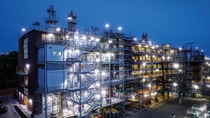Sustainability
Our Carbon Management

We want to live up to our responsibility for climate protection. One way we do this is with our products, which enable our customers to lower CO2 emissions. But that is not all: We also become more efficient in our production and energy use, we will increase our use of renewable energies and we will accelerate the development and deployment of new CO2-free processes for the production of chemicals.
How can we create a more climate-friendly chemical industry?

BASF is setting itself an ambitious goal of net zero by 2050 because we are convinced of the long-term strategic necessity and technical feasibility. Nevertheless, most new technologies are not yet competitive under the current conditions. Since the replacement of existing highly efficient production processes by new plants is very capital-intensive, BASF is working on German and European funding programs such as the IPCEI (Import Project of Common European Interest).
In addition, we work with numerous partners from universities, research institutes and companies on sustainable solutions for a carbon neutral future. We are convinced that the challenges of climate change can only be mastered together with our partners.
News board
Find out more about:





